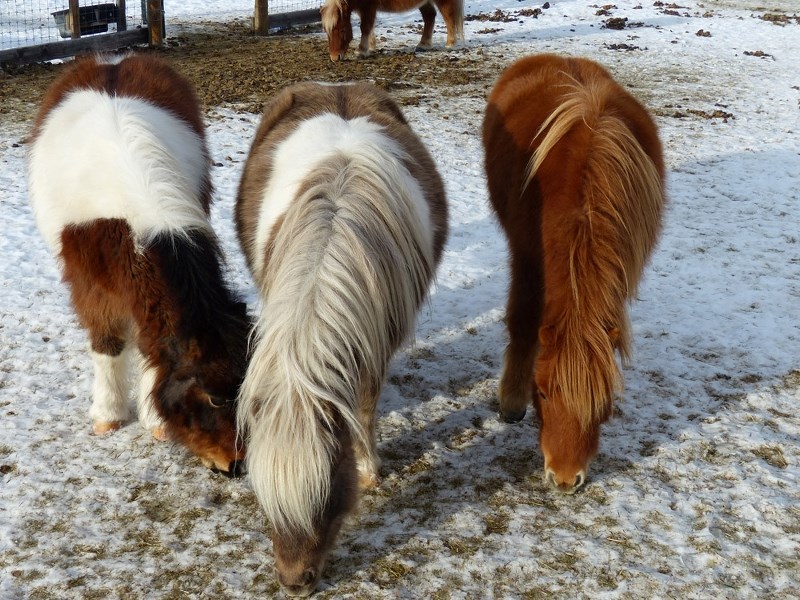Is your horse too fat? Looks can be deceiving.
If you look out in your pasture and see huge hair balls with feet walking around – do you have a problem? Does he look “just right” with his heavy winter coat? You need to check him out.
So how do you determine if your horse is the correct weight? Your very first step is to go put your hands on your horse – if you can feel ribs underneath that winter coat then all is not well and your horse may not be getting the nutrition he needs. If your horse is excessively fleshy over the ribs then you may have an obese horse.
If your horse has a “hay belly”, that does not mean he is fat. A large amount of fodder digesting in the hindgut — not necessarily hay, produces a lot of fermentation (gas) causing the belly to appear large. Some horses will appear visibly larger after a hay meal but it will go down as digestion progresses. If the large belly persists, there may be other causes that require attention. A tool in your “toolbox” of horse care is the Henneke Body Condition Scoring System (BCS). You can use this system to come up with a score based on viewing body fat deposited in specific areas of your horse’s body. The scale is from one to nine, where one is emaciated and nine is obese. There is a lot of literature available showing you the areas to examine on your horse and how to determine your horse’s score – five is considered ideal.
Another tool is using a formula for determining body weight based on the heart girth measurement (works for horses over 14.2 hh). Heart girth is measured at the end of the withers around where your girth would go and back to the withers. You also need body length, which is measured from the point of the shoulder to the point of the buttock (not the measurement you would use for a blanket). The formula is body weight (lbs) = ({heart girth x heart girth} x body length) / 330. This formula is only marginally successful as an indicator as it depends on how you took the two measurements required.
Would you believe there is an app for this? The app is called Healthy Horse (available online from iTunes and Google Play). It uses more measurements and takes into consideration breed type, so may be more accurate at predicting current weight and can suggest optimal weight.
Whatever method you use, keep an eye on your equine friends to insure their good health.




